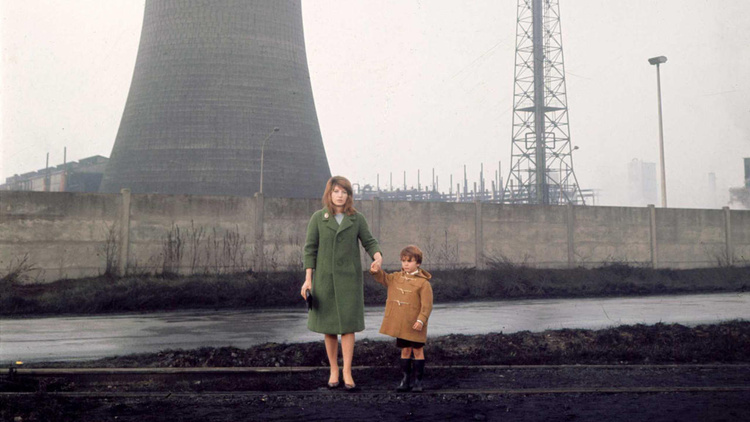Film Screening: Red Desert, Silent Spring

Film screening at The Art School, Glasgow, 22nd Feb 2017, followed by an discussion led by Justin Carter, Vasiliki Kolokotroni, Carl Lavery & Alex Wilde. With plunderphonic soundscape by Lorenzo Prati.
This screening considers Michelangelo Antonioni’s film Red Desert (1964) as a response to the award-winning 1962 book Silent Spring, by marine biologist and conservationist Rachel Carson. Carson shocked the world when she first published her research into the chemical industry, exposing the terrifying effects that the use of chemicals and pesticides such as DDT had on the environment and the human body. Red Desert echoes the same anxiety felt by Carson and her readers; set in a hellish industrial landscape, the film depicts the malaise of young mother Giuliana, whose deeply depressed state of mind reflects the disturbing scenes of industrial modernity that surround her.
The film sees Giuliana wandering uneasily through smoke churning petrochemical plants, haunting grey streets and past polluted rivers of a vivid green. Carlo di Palma’s cinematography lingers over the stark shapes of factories and pylons, and uses an incredibly evocative colour palette to show the beauty of industrial advancement, which raises the question of the complicity of art in the aestheticisation of harmful technologies. Antonioni, who avidly supported what he called ‘progress’, described Giuliana as the ‘neurotic woman’, who he saw as being maladaptive to the necessary developments in technology and industry. Similarly, the chemical companies whose survival was threatened by the outcome of Carson’s research dismissed her as being hysterical. In light of Silent Spring, it is clear that Giuliana’s reaction to her surroundings is not irrational, but rather an awareness of the very real dangers posed by a capitalist society obsessed with progress- at whatever the cost.
Carson’s work is recognised as being fundamentally groundbreaking; Silent Spring sparked the environmental movement that led to the establishment of the U.S. Environmental Protection Agency. Carson is described as having the sensitivity of a poet, and it is remarkable that the strength of her creative voice was able to unleash such large-scale changes in state policy, remaining a legacy for environmental movements today. The concerns that both Red Desert and Silent Spring explore are increasingly relevant to contemporary audiences, as today we see a backlash against environmental policy, and a reinvestment in profit favouring methods of energy production, making environmental action all the more urgent.

